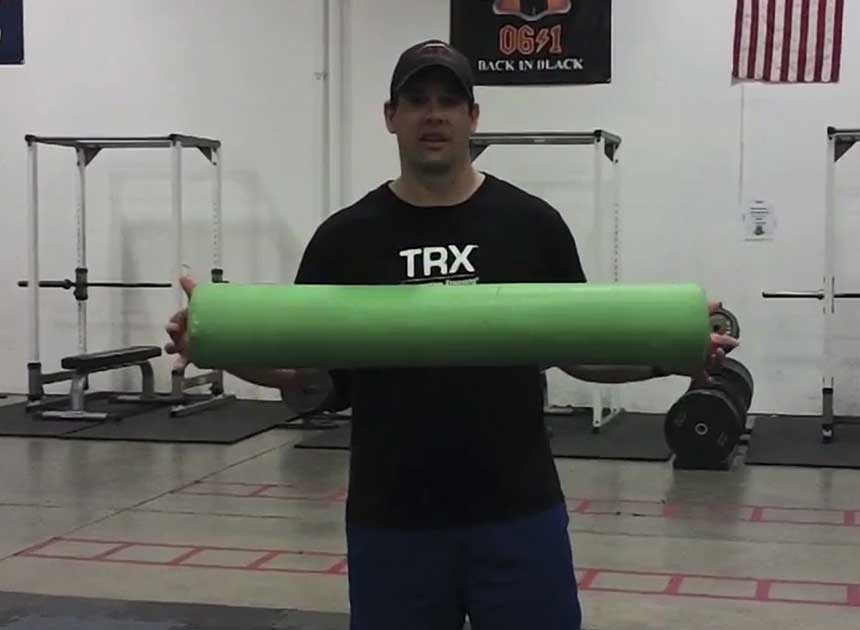
By John Hofman
Firefighters have a very high rate of back problems, which can have a crippling effect. Yet, do we know what the problem really is? We often self-diagnose ourselves with “It‘s a slipped disk“ or “I have a sciatic problem.“ in truth, we really do not know.
Does this sound familiar?
A simple visit to the doctor‘s office…
Doctor (DR): Good morning. How are you feeling?
Firefighter (FF): Not too good, Doc. My back is killing me.
DR: Really? Where does it hurt? [Didn‘t you just tell him that?]
FF: Right here in my lower back (as you point to right near the piriformis).
DR: Does it hurt when you do this?
FF: Yes.
DR: Tell me your symptoms. What do you think it is?
FF: It feels like I slipped a disk.
DR: Ok, I am going to prescribe you [blank]. Take some of these pills, get some rest, and I am going to assign you to light duty for the next three weeks.
You know the rest …
Over the years, I have spent countless hours helping firefighters overcome their back pain. I am proud to say that the methods I used have been very successful, but there still seems to be one common problem associated with firefighting — piriformis syndrome (PS).
What is Piriformis Syndrome?
Piriformis syndrome is a condition in which the piriformis muscle irritates the sciatic nerve, causing pain in the buttocks and referring pain along the course of the sciatic nerve or lower back. Firefighters generally complain of pain deep in the glutes, which is made worse by sitting, climbing stairs, or performing squats. Just a note, the piriformis muscles lie deep in your glute, so many firefighters complain of weakness, stiffness, and a general restriction of movement, all of which are also quite common in sufferers of piriformis syndrome. You may even experience tingling and numbness in the legs.
Many firefighters often self-diagnose themselves with “sciatica.” When I assess them, more often than not, it generally is priformis syndrome. It is diagnosed primarily on the basis of symptoms and on the physical exam. There are no tests that accurately confirm the diagnosis, but X-rays, MRI, and nerve conduction tests may be necessary to exclude other disorders.
What causes it? Piriformis syndrome is predominantly caused by a shortening or tightening of the piriformis muscle. Although this tightening can be attributed to many causes, these causes can be categorized into two main groups: Overload (or training errors) and biomechanical inefficiencies. Firefighters often work in tight spaces, carry heavy loads, and climb ladders. All of these things over time will create some type of imbalance within our lumbo-pelvic region. Other reasons that it may occur are the following:
- Exercising on hard surfaces, like concrete;
- Exercising on uneven ground;
- Beginning an exercise program after a long lay-off period;
- Increasing exercise intensity or duration too quickly;
- Exercising in worn-out or ill-fitting shoes;
- Sitting for long periods of time;
- Poor running or walking mechanics;
- Tight, stiff muscles in the lower back, hips. and buttocks; and
- Running or walking with your toes pointed out.
How do I treat it? A very effective way to help treat PS is do the following:
1. Use the foam roller first: roll out you calfs, hamstrings, glutes, quads, tensor fascia lata, piriformis, and iliotibial band. (see video)
2. Once you “untie the knots,” you can stretch them. Perform the following stretch to create better hip mobility. Over time you should feel relief. Perform these activities one or two times daily (morning and night).
A good rule of thumb for assessing back pain is the followings:
- If the pain is to the knee, it is usually is a muscular or sacroiliac joint problem.
- If the pain goes to the foot, it generally is a disk problem.
J ohn Hofman is the strength and conditioning coach for the Sacramento (CA) Fire Department. He oversees the Wellness Centre, coordinates the department’s medical and fitness assessments; develops recruit fitness training, pre-employment medical and fitness evaluations; and assists the department’s 20 certified Peer Fitness Trainers. In addition, he works as the strength and conditioning coach for the California Regional Fire Academy, Sierra Fire Technology Program, Rocklin Fire Department, and South Placer Fire District. He also consults with the Fire Agency Self-Insurance System of California. For more of John’s work, visit www.Firefighterfitnessonline.com.
ohn Hofman is the strength and conditioning coach for the Sacramento (CA) Fire Department. He oversees the Wellness Centre, coordinates the department’s medical and fitness assessments; develops recruit fitness training, pre-employment medical and fitness evaluations; and assists the department’s 20 certified Peer Fitness Trainers. In addition, he works as the strength and conditioning coach for the California Regional Fire Academy, Sierra Fire Technology Program, Rocklin Fire Department, and South Placer Fire District. He also consults with the Fire Agency Self-Insurance System of California. For more of John’s work, visit www.Firefighterfitnessonline.com.

